After eighteen years of teaching enthusiastic junior high students (JHS), my school merged with its receiving high school. I remembered those JHS students loving the activity, looking great doing it, and clamoring to continue it instead of changing to something new. I could not wait to work with them again.
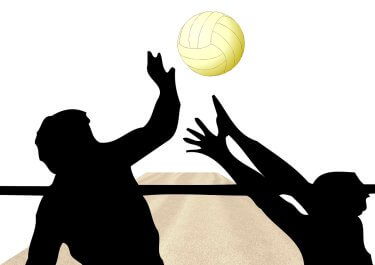
As high school students, I expected them to be older, wiser, and better. Boy was I shocked that first day on the field when the only thing moving was the ball. Where, I wondered, had their enthusiasm and teamwork gone? Sadly, apathy prevailed the second day, the third day, and for a number of weeks. I racked my brain for ways to get them excited again and working as teams. I used our past relationships, encouragement, prodding, humor, and went as far as letting them know how badly their inactivity made me feel. Nothing worked until the day, about a month into the semester, I was pondering aloud about how I was going to grade them. Because, with the exception of a few students, the only thing moving on the field was the ball. To my surprise, my offhand remark caught their attention. Their dramatic reversal is why I came to believe that assessing what to aim for and grade is an important teaching tool.
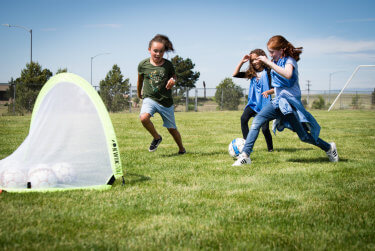
Teaching Skills but Grading Outcomes
The group’s skills were evident in practice, but not in the game. I needed to establish a different standard and did by letting them know that soccer players usually move seventy-five percent of the time during a game. Those words increased their activity level but left challenges to build on. I wanted to see them not just “working,” but working together and loving it. Since they seemed attached to the idea of a good grade, next I decided to aim for teamwork. So, I broke down the responsibilities of each field position, in ways everyone was capable of achieving. For example, I began with the forwards, explaining and posting an outline of their objectives. Forwards were to use (1) footwork before passing, (2) pass laterally unless shooting, (3) stay in line with the ball as it moved toward the goal, and (4) drop back when their opponents gained possession of the ball. The difference in play was amazing. The forwards started working together, but not the defense. So, next class, we focused on defense. Mid-fielders were credited for (1) slowing down opponents, (2) forcing a pass and or trapping the ball, (3) positioning themselves between the ball and the goal they defended, (4) passing to an open forward and (5) taking sideline thrown-ins as quickly as possible. This process continued with other positions on the field of play. These achievable goals got the girls moving so that games became dynamic and everyone seemed engaged. Finally, the class ended in smiles, sweat, and a feeling of good teamwork.
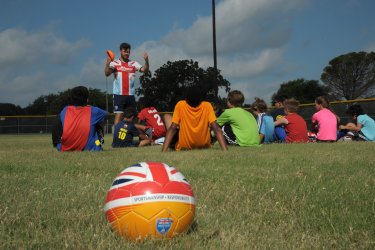
Know Your Classes
Until you know the skills of your students in your class and how they work together, early lessons in a unit should focus on skills and make time for game play. With more time, the first few weeks should be allowed for “free play” at the start of class so students can practice what you taught in prior lessons. I suggest the following: a) leave lots of equipment out for free play/practice that students can get as soon as they arrive, b) use free play time to work individually with whoever is having trouble keeping up, and c) take attendance, and d) do movement rehearsal drills after free play. Once you have a feel for the level of skill you are working with and know your class’s strengths and weaknesses you can do the following:
- Define and teach skills and strategies that will improve student participation.
- Set reasonable expectations, ones that can be accomplished during class time.
- Explain and post desired outcomes.
In summary, decide what to teach (and grade) after getting to know your class’s strengths and weaknesses so you can develop needed skills and set up helpful strategies to reverse the difficulties you observe. For instance, when soccer players treat the ball like a “hot potato,” encourage them to (1) trap the ball first and (2) use a short dribble before passing to slow down the game and encourage players to keep the ball longer. When players have a habit of kicking straight ahead, help them focus on using an outlet pass for defense or inlet pass for offense and explain why. When you see students backing away from the ball, provide pre-game practice in body traps and credit its occurrence during the game.
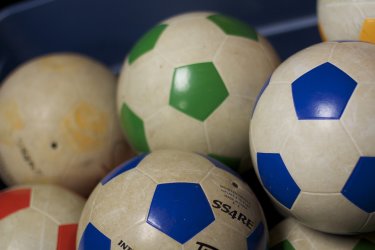
Creating Annual Progress
Set realistic but different goals for each grade level, building on what you taught before. Continue to set up skill training drills and leave equipment out for students to practice with as soon as they get to class. Make sure the goals you set are attainable during class. If students perceive that they are attainable, they will make an effort to achieve them. If they think they can’t, most will not try. Remember, your goal as a teacher is to have participation, where ultimately everyone is getting fit and having fun. Also, anticipate what to expect, observe and adjust from there. Below is an example of how volleyball might look across age levels
Middle School (5th-7th grades)
Middle schoolers do not know what to pay attention to and get even more confused once in a game. Their attention wanders easily. Some feel useless unless they get the ball over the net. Those lacking confidence do not want to make a mistake and avoid the ball by waiting until the last minute to get ready to play it. That strategy is both a catastrophe for them and their team. Aggressive players try to play all the balls and have no clue that their efforts work against them and their team. To counter these issues, set the following goals and compliment everyone who looks as if they are doing them or had the “right idea.”
- Arm motion is correct during movement rehearsal drills.
- Footwork is correct during movement rehearsal drills.
- Eyes are on the ball while it is in play.
- Uses the right bump pass motion to convert low balls into the air.
- Uses the right set-up pass motion when arriving balls are high.
- Uses the right footwork and motion for hitting to the right or to the left
- Knows that the third tap must go over and tries to get it over if the third player.
- Rotates properly.
- Serves successfully at least once.
- Saves balls from hitting the floor if they are within two steps of it.
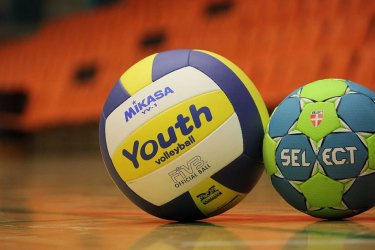
Eighth Grade
In my experience, eighth-graders seem to believe that when a good player touches the ball, the rest of the team need not be part of the play. Strangely, as their confidence increases, teamwork decreases. Rallies get longer, but fewer people are involved because the hitters continued to hit the ball back and forth to each other. To counter this, add the following goals to the one from the year before:
- Motion and footwork is proper during movement rehearsal drills
- Backline players bump the ball UP to their front line players.
- Front line players attempt to touch the ball before it passes over the net.
- Stay in rotation order.
- Servers can put the ball in play.
- Able to move under the ball to set-it-up again.
- Assumes third tap responsibility of getting it over the net.
- It can pass over the net with a change of direction or depth.
- Extra credit to anyone making a save out of the net.
- Credit anyone backing up teammates without taking over
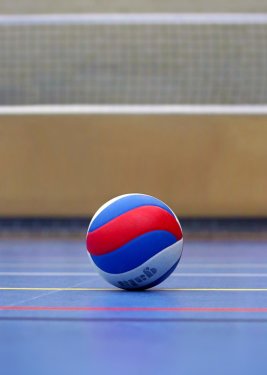
Ninth and Tenth-Grade Co-Ed
In ninth and tenth-grade coed classes, young men are often intent on proving their prowess. Several try to kill the ball every chance they get. Some girls back off, letting the guys hog the court, run out of position and go for the kill even when the set-up is not there. In this group encourage good team volleyball, with an increased show of control and an introduction to spiking and blocking skills:
- First tap is a high bump pass that remains on one’s own side of the court.
- Second tap players get under the ball to use a set-up pass.
- Students show that they can serve successfully and consecutive
- Backline players redirect all balls up and toward their teammates.
- Front lines players jump to block, spike or volley when they pass if over.
- Makes an effort to pass it to the best player in the front line rotation.
- Maintains court position unless making saves
Tenth Grade
- The overhead serve is used offensively.
- The sender of balls over the net aims for weaknesses in opponents’ court coverage.
- Players leave the ground to hit the third tap over the net.
- Can send the bump pass to the center of one’s own court center for a setter.
- Shows offense on the third tap…spike, deep volleys, purposeful direction change.

The upper grades, proficient in basic volleyball skills, should be able to demonstrate an understanding and acceptance of their strengths and weaknesses as a team. Their challenge is to make the game happen the way they want it to, taking advantage of their team’s strengths, avoiding weaknesses, and exploiting their opponents’ weakness during rallies. At this point, you are grading their teamwork more than their skills.
Eleventh Grade
- Slow down the game by using three taps before sending the ball over the net.
- On most plays, attempt a clear bump — set—spike strategy.
- Have a successful overhead serve that can be placed.
- Assume third tap responsibility when it becomes necessary.
- Declare two offensive players and set up the rotation so either he or she is on the front line after rotation.
- Declare a setter able to direct their sets to the best offensive player on the front line.
- Declare defensive players
- Be ready for anything since anything will happen and everyone will have to do that which is not their strength.
Twelve Grade
- Identify and define team assets; i.e., who is best on defense and on offense,
- Assume responsibilities and show skill in designated roles ( defensive bumpers, setter, spikers).
- On defense, blocking and lining up for an anticipated path of the spike.
- Switch positions to take advantage of team assignments.
- Use an occasional change of pace shot to fake-out.
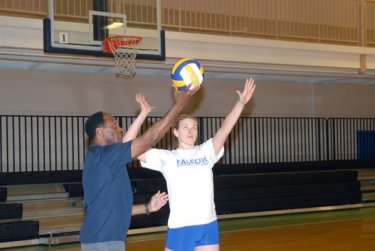
To Strive and to Gain
When choosing skills to teach and outcomes to grade, focus on attainable skills that foster active participation and teamwork. Be secure in the fact that your students’ achievements accomplish more than a good grade. They learn to work together. Their games or routines (dance, gymnastics) become more dynamic, exciting, and fun. They become more fit, learn reasonable expectations, develop a better self-image, and learn to be better class citizens by knowing what they can legitimately encourage the poorest skilled player on their team to succeed. They understand what they have the right to expect and what not to tolerate (indifference) because they can appreciate the difference between lack of effort and lack of ability. In the process, they can sincerely applaud their teammates’ achievements and learn the benefits of working together.
Conclusion
If grading is to be a teaching tool one must accept the notion of “relative excellence” and believe that an ”A” in physical education does not necessarily go to the most highly skilled student. Relative excellence encourages everyone to get high grades because the level sought is attainable if students focus on what is being taught and try to comply with what is valued by their teacher. With clearly established goals, students become capable of motivating each other. In such an environment, the disinterested get interested and skills learned in isolation become useful in context. Games improve dramatically. The “physical” in physical education is ongoing. Units end with a crescendo of excitement because everyone is involved in all aspects of the activity, the planning, the doing and sometimes refining. In such an environment, having won or lost, everybody is a winner.
This article only dealt with soccer and volleyball, because those were the units I was confronted with apathy from my now high school students. The fact is, I believe a diversified physical education program that includes dance, individual sports, and self-testing activities is imperative so that everyone, even non-athletes have something in the program that they will truly love. If you need help developing units that have your kids clamoring to continue, or in establishing progressive goals for what you teach or would teach if you knew the activity better, or need help devising skills rubrics to base your grades on, you can find that and more spelled out for 18 activities with units for each grade level in COMPLETE PHYSICAL EDUCATION PLANS FOR GRADES 5-12 by Isobel Kleinman.
